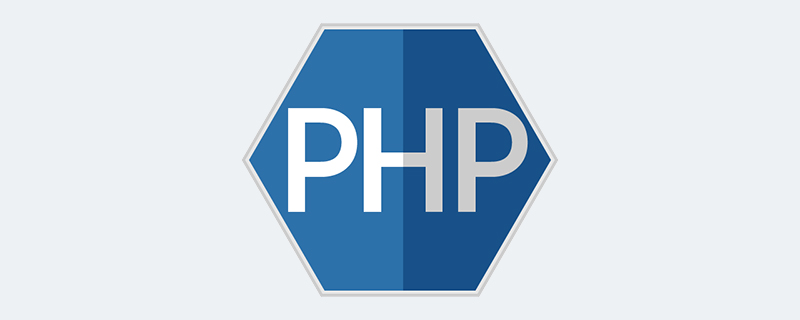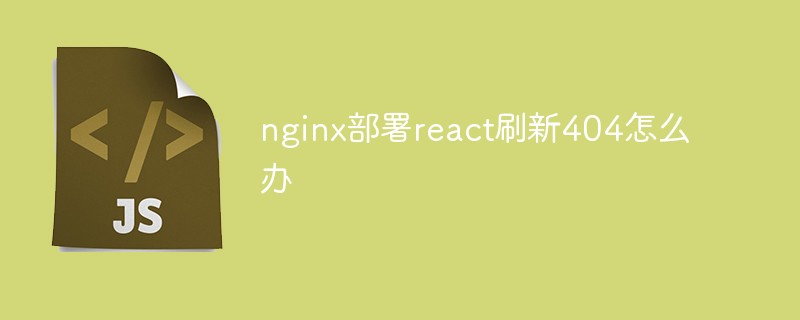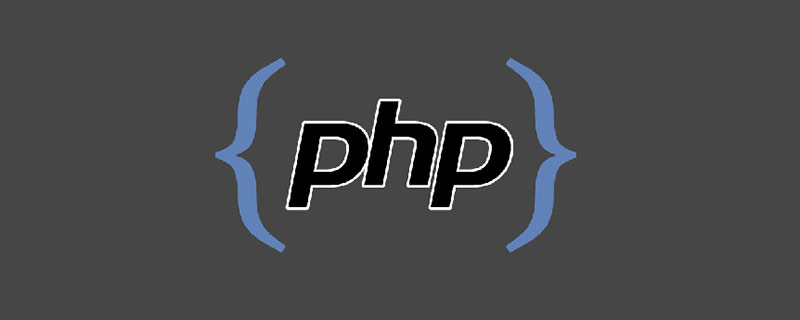 Backend Development
Backend Development PHP Tutorial
PHP Tutorial Build elastic and scalable PHP application clusters using Docker Compose, Nginx and MariaDB
Build elastic and scalable PHP application clusters using Docker Compose, Nginx and MariaDB
Build elastic and scalable PHP application clusters using Docker Compose, Nginx and MariaDB
Introduction:
With the rapid development of Internet technology, more and more Many applications need to be elastic and scalable to meet the growing needs of users. In traditional server architecture, achieving elastic expansion often requires complex configuration and adjustment, which makes it difficult to meet rapidly changing needs. Using Docker Compose, Nginx and MariaDB, we can easily build an elastic and scalable PHP application cluster to meet the needs of high concurrency and large traffic.
1. Introduction to Docker Compose
Docker Compose is a tool officially provided by Docker for defining and running multiple Docker containers. Through a configuration file, we can define the dependencies and configuration information of multiple containers, and use Docker Compose commands to quickly deploy and manage the entire cluster.
2. Introduction to Nginx
Nginx is a high-performance web server and reverse proxy server that can handle a large number of concurrent connections and high-load requests. Nginx is characterized by its lightweight, good stability, and low resource consumption. It is very suitable as the front-end entry for PHP application clusters.
3. Introduction to MariaDB
MariaDB is a relational database management system that is widely used in Web applications. It is a fork of MySQL that retains all the functionality of MySQL and adds some new features and performance optimizations. MariaDB is characterized by fast speed, good stability, and strong scalability, making it very suitable as a back-end database for PHP application clusters.
4. Create a Docker Compose configuration file
First, we need to create a Docker Compose configuration file named docker-compose.yml. In this file, we need to define a set of services and specify dependencies between them, container images, and port mappings. The following is the content of a sample configuration file:
version: "3"
services:
nginx:
image: nginx:latest
ports:
- "80:80"
volumes:
- ./nginx.conf:/etc/nginx/nginx.conf
depends_on:
- php
php:
image: php:latest
volumes:
- ./php:/var/www/html
mariadb:
image: mariadb:latest
ports:
- "3306:3306"
environment:
- MYSQL_ROOT_PASSWORD=secretIn the above configuration file, we define three services: nginx, php and mariadb. Among them, the nginx service uses the officially provided Nginx image and maps the host's 80 port to the container's port 80; the php service uses the officially provided PHP image and maps the host's ./php directory to the container's /var/ www/html directory; the mariadb service uses the officially provided MariaDB image and maps the host's 3306 port to the container's 3306 port. In addition, we also specify the dependency between containers through the depends_on keyword to ensure that the php container starts before the nginx container starts.
5. Write Nginx configuration file
Next, we need to write an Nginx configuration file to specify the behavior and rules of the web server. In this file, we can define virtual host, reverse proxy, load balancing and other functions. The following is the content of a sample configuration file:
server {
listen 80;
server_name example.com;
location / {
proxy_pass http://php;
proxy_set_header Host $host;
proxy_set_header X-Real-IP $remote_addr;
proxy_set_header X-Forwarded-For $proxy_add_x_forwarded_for;
}
}In the above configuration file, we define a virtual host that listens to port 80 and forwards all requests to the PHP service. Through the proxy_pass directive, we forward the request to a service named php, which is the service name defined by Docker Compose.
6. Build and start the application cluster
After completing the above configuration, we can use the Docker Compose command to build and start the entire application cluster. Execute the following command in the terminal:
$ docker-compose up -d
This command will create and start all defined containers based on the configuration information in the docker-compose.yml file. The -d parameter means running in background mode, that is, the log will not be displayed in real time on the terminal. Once the execution is complete, we can access the application by accessing http://localhost.
7. Expand the application cluster
If we need to expand the application cluster to meet higher concurrency requirements, we only need to add a new php service to the Docker Compose configuration file. For example, we can add the following content to the docker-compose.yml file:
php2:
image: php:latest
volumes:
- ./php:/var/www/htmlThen, use the docker-compose up -d command to rebuild and start the entire cluster. In this way, we successfully expanded the application cluster and achieved elastic expansion requirements.
Summary:
By using Docker Compose, Nginx and MariaDB, we can easily build an elastic and scalable PHP application cluster. Docker Compose provides the ability to quickly deploy and manage clusters, Nginx as the front-end portal can handle high concurrency and large traffic requests, and MariaDB as the back-end database provides stability and scalability. In practical applications, we can flexibly configure and adjust according to specific needs to meet changing business needs.
The above is the detailed content of Build elastic and scalable PHP application clusters using Docker Compose, Nginx and MariaDB. For more information, please follow other related articles on the PHP Chinese website!
 内存飙升!记一次nginx拦截爬虫Mar 30, 2023 pm 04:35 PM
内存飙升!记一次nginx拦截爬虫Mar 30, 2023 pm 04:35 PM本篇文章给大家带来了关于nginx的相关知识,其中主要介绍了nginx拦截爬虫相关的,感兴趣的朋友下面一起来看一下吧,希望对大家有帮助。
 nginx限流模块源码分析May 11, 2023 pm 06:16 PM
nginx限流模块源码分析May 11, 2023 pm 06:16 PM高并发系统有三把利器:缓存、降级和限流;限流的目的是通过对并发访问/请求进行限速来保护系统,一旦达到限制速率则可以拒绝服务(定向到错误页)、排队等待(秒杀)、降级(返回兜底数据或默认数据);高并发系统常见的限流有:限制总并发数(数据库连接池)、限制瞬时并发数(如nginx的limit_conn模块,用来限制瞬时并发连接数)、限制时间窗口内的平均速率(nginx的limit_req模块,用来限制每秒的平均速率);另外还可以根据网络连接数、网络流量、cpu或内存负载等来限流。1.限流算法最简单粗暴的
 nginx php403错误怎么解决Nov 23, 2022 am 09:59 AM
nginx php403错误怎么解决Nov 23, 2022 am 09:59 AMnginx php403错误的解决办法:1、修改文件权限或开启selinux;2、修改php-fpm.conf,加入需要的文件扩展名;3、修改php.ini内容为“cgi.fix_pathinfo = 0”;4、重启php-fpm即可。
 nginx+rsync+inotify怎么配置实现负载均衡May 11, 2023 pm 03:37 PM
nginx+rsync+inotify怎么配置实现负载均衡May 11, 2023 pm 03:37 PM实验环境前端nginx:ip192.168.6.242,对后端的wordpress网站做反向代理实现复杂均衡后端nginx:ip192.168.6.36,192.168.6.205都部署wordpress,并使用相同的数据库1、在后端的两个wordpress上配置rsync+inotify,两服务器都开启rsync服务,并且通过inotify分别向对方同步数据下面配置192.168.6.205这台服务器vim/etc/rsyncd.confuid=nginxgid=nginxport=873ho
 如何解决跨域?常见解决方案浅析Apr 25, 2023 pm 07:57 PM
如何解决跨域?常见解决方案浅析Apr 25, 2023 pm 07:57 PM跨域是开发中经常会遇到的一个场景,也是面试中经常会讨论的一个问题。掌握常见的跨域解决方案及其背后的原理,不仅可以提高我们的开发效率,还能在面试中表现的更加
 nginx部署react刷新404怎么办Jan 03, 2023 pm 01:41 PM
nginx部署react刷新404怎么办Jan 03, 2023 pm 01:41 PMnginx部署react刷新404的解决办法:1、修改Nginx配置为“server {listen 80;server_name https://www.xxx.com;location / {root xxx;index index.html index.htm;...}”;2、刷新路由,按当前路径去nginx加载页面即可。
 nginx怎么禁止访问phpNov 22, 2022 am 09:52 AM
nginx怎么禁止访问phpNov 22, 2022 am 09:52 AMnginx禁止访问php的方法:1、配置nginx,禁止解析指定目录下的指定程序;2、将“location ~^/images/.*\.(php|php5|sh|pl|py)${deny all...}”语句放置在server标签内即可。
 Linux系统下如何为Nginx安装多版本PHPMay 11, 2023 pm 07:34 PM
Linux系统下如何为Nginx安装多版本PHPMay 11, 2023 pm 07:34 PMlinux版本:64位centos6.4nginx版本:nginx1.8.0php版本:php5.5.28&php5.4.44注意假如php5.5是主版本已经安装在/usr/local/php目录下,那么再安装其他版本的php再指定不同安装目录即可。安装php#wgethttp://cn2.php.net/get/php-5.4.44.tar.gz/from/this/mirror#tarzxvfphp-5.4.44.tar.gz#cdphp-5.4.44#./configure--pr


Hot AI Tools

Undresser.AI Undress
AI-powered app for creating realistic nude photos

AI Clothes Remover
Online AI tool for removing clothes from photos.

Undress AI Tool
Undress images for free

Clothoff.io
AI clothes remover

AI Hentai Generator
Generate AI Hentai for free.

Hot Article

Hot Tools

Safe Exam Browser
Safe Exam Browser is a secure browser environment for taking online exams securely. This software turns any computer into a secure workstation. It controls access to any utility and prevents students from using unauthorized resources.

ZendStudio 13.5.1 Mac
Powerful PHP integrated development environment

SublimeText3 English version
Recommended: Win version, supports code prompts!

Zend Studio 13.0.1
Powerful PHP integrated development environment

Dreamweaver CS6
Visual web development tools





